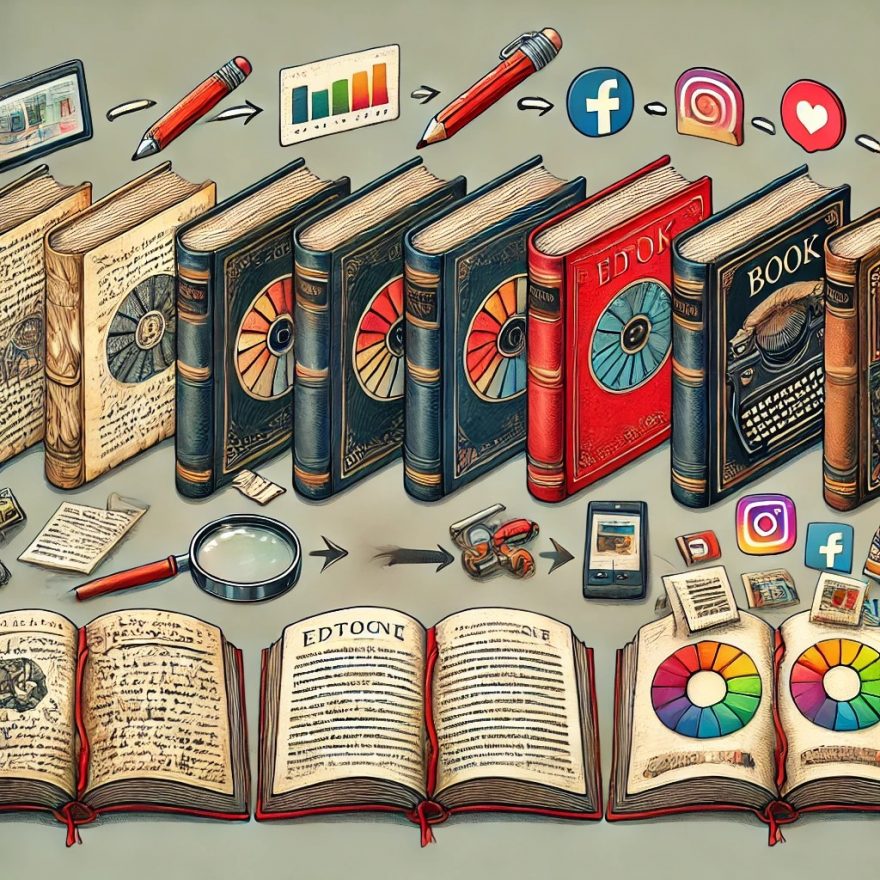The journey of transforming a manuscript into a published book is an intricate, fulfilling process.
For authors, it involves turning their raw, creative ideas into a polished, professional work that is ready to captivate readers.
From editing to cover design, each stage plays a critical role in shaping a manuscript into a finished masterpiece.
Let’s explore each essential phase of book publishing and uncover why every step is significant.
A strong foundation in editing is crucial to any book’s success.
There are various types of editing, including developmental, line, and copy editing.
Developmental editing focuses on the structure, plot, and pacing, ensuring that the story flows smoothly.
Line editing fine-tunes sentence structure, enhancing clarity and style, while copy editing catches grammatical errors and inconsistencies.
Through each edit, the manuscript becomes clearer, more compelling, and reader-ready.
Once the manuscript is polished, the design phase brings it to life visually. A well-designed cover is a book’s first impression, often determining if a potential reader picks it up.
The cover should capture the book’s theme and appeal to the intended audience, balancing creativity with market appeal.
Equally important is the interior layout, which enhances readability and ensures a seamless reading experience.
Choosing the right format is another key decision.
Today, authors can publish in various formats, including hardcover, paperback, and digital.
Each format has unique advantages: hardcover books appeal to collectors, paperbacks are more affordable for casual readers, and e-books offer convenience. Selecting the best format depends on the target audience and the book’s purpose.
Publishing also requires obtaining an ISBN (International Standard Book Number) and barcode, which identify the book globally and allow for distribution.
These identifiers are essential for bookstores, libraries, and online platforms, enabling smooth cataloging and sales tracking.
ISBNs are unique to each format, meaning an author publishing in both paperback and e-book formats will need separate ISBNs for each.
Marketing is a vital part of the publishing process, turning a completed book into a product that reaches readers.
Effective marketing involves understanding the target audience, identifying channels to reach them, and creating a campaign.
This could include social media, book reviews, and press releases.
Marketing also entails building an author brand, which helps readers connect with the author and builds trust.
Distribution completes the journey from manuscript to masterpiece.
Once the book is published, it must be made available in places where readers can access it, from online platforms like Amazon to brick-and-mortar bookstores.
Print-on-demand services and digital platforms have made distribution more accessible, allowing authors to reach a global audience.
For many authors, collaborating with professionals at each stage of the publishing process can be invaluable.
Professional editors, designers, and marketing experts bring specialized skills and experience, elevating the quality of the book.
Their expertise ensures that the author’s vision is honored while producing a book that meets industry standards.
Self-publishing and traditional publishing each have unique benefits, and choosing the right path depends on the author’s goals.
Self-publishing offers creative control, while traditional publishing provides resources and a built-in distribution network.
Both paths require dedication and an understanding of the publishing process.
In the end, publishing is a labor of love.
For authors, it’s about sharing a piece of themselves with the world.
Each phase in the publishing process—from editing to distribution—adds value, transforming a simple manuscript into a work that can inspire, educate, and entertain.

